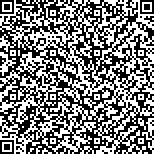Archive > Volume 39 Issue 6 > 2013,39(6):675-680. DOI:10.7519/j.issn.1000-0526.2013.06.002 Prev Next
Application Research on Infrared Hyperspectral Data Near Surface: An Experiment on Assimilating Observation Data over Sea
- Article
- Figures
- Metrics
- Preview PDF
- Reference
- Related
- Cited by
- Materials
Abstract:
Because of the complexity of underlying surface, satellite radiation data near surface has not been fully developed and used. Infrared hyperspectral data near surface has not been applied on land in our GRAPES model, either, and even on the ocean where the underlying surface is simple relatively, the effect of using infrared spectral data is not very satisfied due to the inaccurate estimation of the sea surface temperature of the GRAPES model’s background. In view of the question that the estimation of the sea surface temperature is inaccurate, this paper uses one dimensional variational (1DVar) method to adjust the background sea surface temperature when the FOV (field of view) of AIRS (The Atmospheric Infrared Sounder) is clear, and utilizes the GRAPES model to do cycle assimilation, then researches the influence of the analytic fields after adjusting the sea surface temperature. The results indicate that using 1DVar to adjust temperature not only makes the simulated brightness temperature in the low level channels better match the observated brightness temperature, but also effectively improves the analytic fields. Besides, the geopotential height fields in the low, middle and upper atmosphere are all improved well, and the humidity fields and the wind fields in the lower atmosphere are also obviously improved.
Keywords:
Project Supported:
Clc Number:


Mobile website









